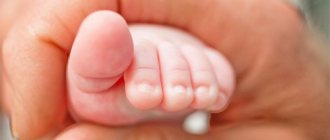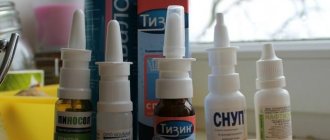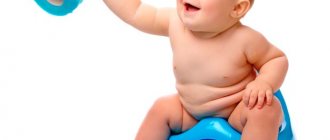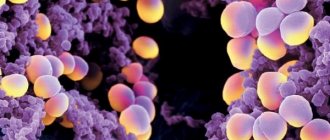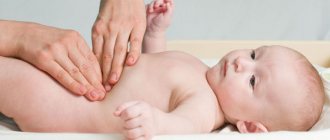Ingrown toenails in children are common and cause a lot of inconvenience. Ingrowth is the deepening of the nail plate into the periungual (proximal) ridge, which is caused by its abnormal growth. Accompanied by swelling, redness of adjacent tissues, pain while walking. Injury to the skin often leads to bacterial inflammation and the disease becoming chronic. Then, in the area of the ingrown horny plates, abscesses appear, from which pus is released from time to time. If left untreated, complications arise - abscess, osteomyelitis, gangrene.
Causes
A child’s nail can grow into the skin for a variety of reasons, here are the most basic of them:
- If you notice an ingrown toenail on your toenails, it is quite possible that this was due to improperly selected shoes. Shoes that are too tight or narrow can lead to such consequences, as they strongly compress the foot and subsequently cause ingrowths. This also applies to newborns; all their socks and booties should also be loose.
- Absence or improper care of the baby’s nails, for example, improperly trimmed nail plates, especially if too large scissors were used. Ingrowns also form if the nail has been trimmed unevenly, especially in infants.
- Nails can grow ingrown due to a lack of vitamins in the body. This leads to curvature of the nail plate, and the risk of pathologies increases.
- Any injuries to the fingers can also lead to ingrowths.
- Ingrown toenails can also form if your child has flat feet or club feet.
If you do everything correctly and follow the above, then you and your child will never encounter a problem. The task of parents is to monitor the appearance of signs of an ingrown toenail in their child.
Symptoms and signs of an ingrown toenail
Onychocryptosis can be recognized by its first manifestations: where the free edge of the plate grows into the skin, swelling and pain appear. Its intensity increases with pressure on the pathological area. If left unattended, symptoms progress:
- the wound becomes infected
- a purulent-inflammatory reaction develops,
- body temperature rises,
- general malaise develops.
Inflamed skin transforms into a benign neoplasm and a granuloma is formed. It is dark red in color and looks like a piece of raw meat. The baby cannot describe in words how painful it is, so he is constantly capricious and crying. He begins to sweat excessively. Such manifestations indirectly indicate that the process of ingrowth of the nail plate brings severe discomfort to him.
Such a pathological process cannot be ignored: complications may arise that can lead to amputation of the finger. Advanced inflammation with intense suppuration contributes to the development of an abscess. Infection constantly spreads both along the periphery and deep into the tissues, affecting blood vessels (lymphadenitis) and bones (osteomyelitis). For young children, these are very dangerous diseases that can lead to blood poisoning and death. Onychocryptosis will not go away on its own, so when the first signs appear, you should consult a dermatologist.
Drug treatment
It is important to remember that drug treatment for an ingrown toenail in a child (photo of the drug above) is prescribed exclusively by the attending physician.
If the toenail becomes ingrown and pain occurs, the child may be prescribed the following medications:
- Balm “Nogtinorm”. Used after a softening foot bath. Apply to the periungual fold for 15-20 minutes. The procedure is carried out twice a day for four weeks.
- Ointment "Uroderm" (analogue - drug "Foretal"). Apply twice a day to the affected area, after which the child puts on socks for one hour. In children, to avoid complications, the ointment is used for no more than three days.
- Ichthyol ointment. Apply daily before bed to the nail and periungual fold, secure on top with a cotton pad and adhesive tape. In the morning, any remaining drug should be removed.
- Vishnevsky ointment. Used similarly to ichthyol ointment. A similar drug is Levomekol. If an ingrown toenail becomes infected, your doctor may prescribe antibiotics for internal use.
What to do? A child has an ingrown toenail, but medications don’t help? If drug therapy is ineffective and there is a risk of complications, the patient is prescribed a procedure for removing the nail and, if necessary, damaged areas. The following methods exist.
How to quickly relieve inflammation in a child?
If a visit to the doctor is postponed for some reason, you need to provide first aid to the child yourself. First of all, it is necessary to relieve inflammation. This can be done with the help of medications or folk remedies.
Creams with anti-inflammatory and antibacterial effects are suitable for treating ingrown corners. To treat soft tissues, you can use drugs that draw out purulent contents (Vishnevsky ointment, Ichthyol ointment). Before using the medicine to treat a baby or newborn, you should read the instructions for use. You can find out at what age the ointment can be used in the sections “Contraindications” and “Use in children”.
Radio wave surgery
A high-tech method of removing ingrown toenails using high-frequency waves using thermal energy. Part of the nail or its surface is removed using radio waves from a special surgical “scalpel”. The procedure is short and requires only local anesthesia. It provides high-quality removal of damaged tissue and ingrown nails. Complications are rare.
Healing occurs quite quickly.
Traditional medicine recipes
There are many folk remedies that can soften the skin near the nail, remove inflammation and suppuration. The most popular recipes are:
- You can use calendula ointment. To prepare it, mix a large spoonful of melted wax with 2 tablespoons of calendula decoction. Add aloe leaf crushed into pulp and a little lamb fat to the mixture. The ointment should be applied to the affected nail for several hours, after which treatment can be carried out.
- Mix aloe pulp and butter, add chopped garlic and natural honey to the mixture. The ingredients are mixed until a homogeneous mass is obtained, and then kept in a water bath for several minutes. The resulting ointment is used for compresses that need to be applied during night sleep.
- An aloe leaf that has been kept in the refrigerator for 10 days helps to get rid of inflammation. Then it is washed and the skin is removed, the plant is fixed on the problem finger. After treating the nail plate and trimming the nail, aloe is again applied to the sore spot.
- They use butter without any additives, which softens the skin well. Before this, you need to steam the sore finger in a soda solution, then apply a thick layer of oil to it, cover it with gauze and film, and bandage it. In the morning, remove the bandage, steam the finger again, carefully lift the nail plate, and place a piece of fabric under it.
- To prepare foot baths, chamomile, calendula, string, and St. John's wort are most often used . The decoction is prepared by brewing herbs in the amount of two large spoons in a liter of boiling water for 40 minutes. Then the liquid is filtered and the baby’s foot is kept in a warm bath for about 30 minutes.
- A simple and effective remedy is soap baths, for which you need to use brown or tar soap. It is grated on a fine grater and diluted in water. Baths help relieve pain, soften the skin and nail plate, and eliminate inflammation.
At the same time, parents must understand that they accept full responsibility for possible negative consequences or insufficient effectiveness of treatment.
Surgical method
If a child’s toenail grows in, what should you do? The doctor may recommend a surgical method to solve the problem. Removal occurs with a surgical scalpel followed by suturing. It is rarely used in children due to the high risk of subsequent nail deformation. Long recovery period. Antibacterial and antiseptic therapy is necessary during the healing process.
What pathologies lead to abnormal nail growth?
When ingrowth occurs, it is necessary to exclude the development of diseases such as mycosis, rickets, vitamin deficiency, flat feet, hallux valgus, and congenital malformation of the nail plate. If the nail is ingrown due to a concomitant disease, all efforts should be directed toward treating this pathology.
An ingrown toenail often appears when:
- using tight and uncomfortable shoes,
- mechanical damage to the toe,
- improper or irregular nail cutting.
Important! Most often, the defect is found on the child’s thumb, since this finger is the most vulnerable.
Home treatment
Every parent must know how to behave if a child’s toenail grows. To prevent damage to the integrity of the tissue, it is necessary to take timely necessary measures to eliminate the problem to preserve the integrity of the nail and prevent further spread of the infection.
To do this, it is not necessary to contact professional doctors; this problem can be solved at home. There are the following methods to eliminate the problem of ingrown toenails at home:
- On a daily basis, before going to bed, give your child warm baths. They are made in the following way. Dissolve table salt or soda in water in a ratio of ten grams per liter of water. Additionally, you can pour chamomile infusion, potassium permanganate or furatsilin. If your child has a pronounced intolerance to essential oils, then you can add them; tea tree oil or bergamot are best suited for softening. Hands or feet are placed in such a bath for a long period of time, at least half an hour. If your child is very restless, you need to think in advance about what to do with him at this moment. It is important to monitor the temperature of the water and, as soon as it cools down, immediately add a new portion of warm water.
- In addition to warm baths, you can eliminate the problem of ingrown toenails at home with softening compresses, which are also done at night. It is best to do them immediately after a warm bath, applying them to the right place. The best option is to make them from lamb fat or from butter and cow's milk.
- Try to trim the ingrown part of the nail, this must be done quite carefully.
- If as a result of any action a small wound is revealed, it must be treated with anti-inflammatory and disinfectant drugs; the most effective in this case will be aloe juice, alcohol or iodine.
- The next, no less good way is to take a small piece of cloth or a cotton pad and completely soak it in butter and place it under a slightly raised nail. This procedure also needs to be done on a daily basis. Nails must be trimmed with a file once every three days until the problem of ingrown nails in your child is completely and finally eliminated.
Possible consequences
Regardless of the means and method of treating ingrown toenails in a child, every parent should understand that if the approach does not help, they should consult a doctor. If this is not done and therapy is not started in more radical ways, the situation can significantly worsen and provoke the development of serious complications.
We must not forget that an ingrown nail always threatens with infection. As a result, the nail may fester. If at first everything seems quite harmless, in the absence of adequate therapy, pathological processes such as abscess, sepsis and osteomyelitis may develop. Unfortunately, a child’s body is not always able to cope with an infection, which can quickly spread throughout the body.
The infection is especially dangerous for children suffering from diabetes - their body is more susceptible. The result can be gangrene of the finger and even the foot. That is why doctors take the problem of ingrown toenails so seriously, especially in children, and always recommend starting adequate therapy on time and carrying out the full range of necessary measures. This will help avoid serious consequences in the future.
Surgery
If it turns out that the problem of a nail ingrown into the skin has become familiar to you, surgical intervention will help you get rid of this problem quickly and without severe pain. There are several types of such intervention. Before any operation, injections are given, thanks to which the child will not feel pain in the future. Novocaine or lidocaine is most often used as an anesthetic drug.
It is important to remember that any of these drugs can cause an allergic reaction or even lead to shock. Therefore, before the medicine is administered, you should consult your doctor. One of the easiest methods to solve the problem of an ingrown toenail is to get rid of it with the help of a surgeon. He can completely remove the entire nail plate. Next, the nail will be completely restored after three months. During this period, the place from which the plate is removed remains completely defenseless and even the slightest contact with it can cause severe pain, and especially in the first time after the operation.
Most often, what happens is that the nail immediately begins to grow in, this is due to the fact that the nail fold is very inflamed. Therefore, after the operation, you need to perform plastic surgery of the roller near the nail.
An ingrown toenail on a child's toenail is removed as follows. A small oval-shaped incision is made on the side of the finger, a small part of the skin is removed and the resulting wound is sutured. After this, the nail fold turns out and its contact with the nail ends. Having done this, you can be almost completely sure that you will not have to face such a problem in the future.
With the development of technology, old methods are now being abandoned and new ones are being used. There is a method, after which the formation of any injuries is practically eliminated, and this is laser correction. Laser beams are directed at the nail plate and begin to heat it up, causing evaporation of both the plate itself and the sprouting part near the nail.
Any abnormalities and infections that occur are also removed by laser. In addition, the laser helps cure the fungus and prevents the formation of a new one. Such a procedure can cause complications only if the nail has been affected by some disease, or if the child has diabetes mellitus or atherosclerosis. These diseases entail poor circulation, which reduces regeneration and protection from various infections, which can later lead to pathologies.
Diagnostics
If you cannot get rid of the ingrown corner on your own, you will need the help of a specialist. For example, you can make an appointment for your child to see a surgeon. The doctor will examine the history and symptoms of the disease and find out whether the nail has grown in before. The diagnosis is made based on data obtained during a visual examination.
The reason why the nail plate grows in can be determined using additional laboratory tests. To identify concomitant pathologies, the following diagnostic measures are carried out:
- blood sugar test,
- general blood analysis,
- radiography of the foot bones.
If fungal infections are suspected, the patient is given a referral to a dermatologist.
Prevention
To prevent ingrown nails, you must adhere to the following rules:
- Wearing shoes should not cause discomfort for a child. Your fingers should be free and everything should be the right size. Every toe should move freely in shoes. Under no circumstances should you buy large shoes; in the future, this may lead to the formation of flat feet and ingrown toenails.
- The child's socks and tights should also not squeeze the fingers and be exactly the right size. In addition, you need to pay attention to the fabric from which they are made; cotton is the most skin-friendly.
- Things need to be washed on time, preferably after each time you go outside.
- One of the main rules is that nails must be cut correctly. On the toes, the nail should be cut off completely, and the remaining sharp corners should be treated with a nail file. The maximum size a nail plate can protrude is a millimeter.
List of preventive measures
Complex therapy of any disease should be supported by preventive measures to avoid unnecessary relapses. This also applies to ingrown nails in children. After treatment, it is necessary to prevent any possibility of their reappearance.
The following fairly simple and accessible measures can help:
- You should always choose shoes that fit your child strictly. The pair should have a spacious sock and not put pressure on the fingers, which the child should move freely. Preference should be given to models made from natural materials without heels - they will allow the nails to “breathe” and will not put additional pressure on the nail plates. If necessary, shoes should be orthopedic or with special inserts.
- It is necessary to trim the growing edge of the nail plate correctly. On the toes, nails are always trimmed straight, giving a clear square (rectangular) shape. The edge should protrude slightly, and the corners should be neatly filed.
- It is necessary to treat injuries and concomitant diseases in a timely manner: this will strengthen the nails, avoid ingrowth, infection and the development of complications.
- You should take care of your feet: personal hygiene is always the key to good health, so it is necessary to teach your child to take care of his feet from childhood. You should wash them often, avoid sweating and treat them with pumice. It is necessary to explain to the child why only personal shoes should be used in public places (fungus prevention).
Do not forget about the well-known truths - it is necessary to provide the child with a balanced diet, healthy sleep and full physical activity. It is necessary to “instill” in him the correct way of life. This will strengthen the body and ensure health of all systems and organs. This will also have a beneficial effect on your nails.
Close contact with a doctor will help you to promptly notice the onset of ingrown toenails, start therapy on time and prevent the development of serious consequences.
An ingrown toenail on the big toe or any other can cause a lot of anxiety and pain, especially in childhood or adolescence. In an attempt to solve the problem, parents resort to various methods, which do not always help, and treatment can take a long time.
To prevent this from happening, you should not delay contacting a doctor, but should jointly select the most effective treatment method. A competent search for the causes of ingrowth, their elimination and adequate therapy followed by prevention will allow you to overcome the problem and prevent its recurrence in the future.
